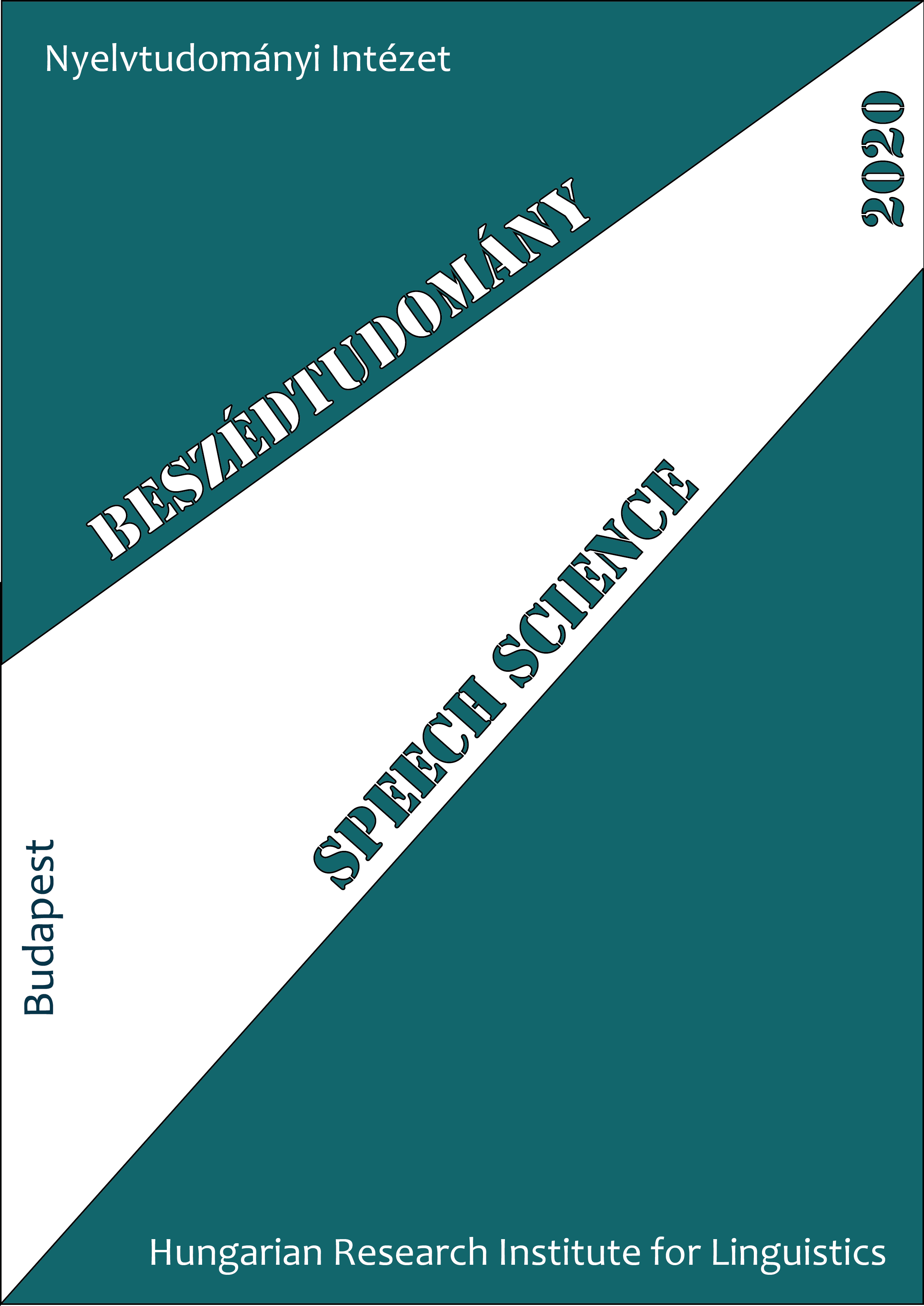A néma szünetek sajátosságai az életkor és a beszédtípus függvényében
Absztrakt
Speech is occasionally interrupted by silent pauses of various length. Pauses serve various functions in speech, like breathing, grammatical function, marking syntactic boundaries, providing time for speech planning processes, for self-repair and for perception as well. The realization of pauses depends on various factors, e.g. the speaker’s age, the length and the complexity of the utterance or the speech style. Researches revealed connection between the speech situation and the pauses. The more complex a speech task was – the greater cognitive effort it required – the longer and more frequent the pauses became. Pause in a conversation has also various functions: it plays an important role in turn-taking system, can be connected with pragmatic or social meanings or with cognitive reasons. Furthermore, conversations can have pauses for thinking or for dramatic effect, the speaker can use them to highlight new information, and they can also be used to structure the discourse.
The aim of the study is to analyze the occurrence and duration of silent pauses in two age groups according to their position in conversations. Our hypotheses were that (i) silent pauses realize with different patterns according to age groups; (ii) the duration of silent pauses is determined by their position. 20 conversations and narratives from two age groups (20-35 years old and 40-55 years old) were selected from the Hungarian Spontaneous Speech Database, BEA. Three speakers participated in each conversation; the interviewer and one speaker were colleagues, the third participant was the subject. Silent pauses were categorized based on the system developed by Gyarmathy & Horváth (2018).
Results showed that the strategies of pausing are determined by its functions, the speech type and the speakers’ age and individual characteristics. Pauses occurred in a grammatically justified position in a greater ratio without breaking the unity of the utterance.




